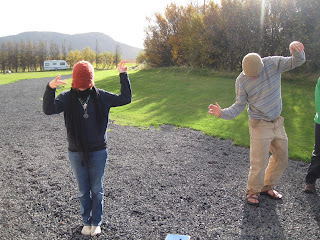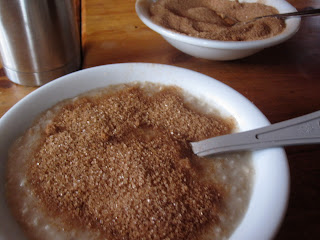On our recent trip to the Hekla forest, our tree planting efforts sparked a question in our minds: Are we living a carbon negative lifestyle in Iceland? What impact are we making?
To investigate these questions, we looked into both our carbon production and our carbon sequestration efforts and calculated our carbon balance.
We began by looking into the amount of carbon that would be sequestered by our weekend reforestation projects:
Basic facts:
Number of trees planted by Lizzie and Sylvia: 536
Total average weight of 1 birch tree: 1 lb
Average diameter of 1 birch tree: 0.25 in
Average height of 1 birch tree: 0.58ft
Let the calculations begin!
Calculating the dry weight of a tree:
Dry weight = Total weight * 72.5%
Dry weight = 1 lb * 0.725 = 0.725 lb
Calculating the carbon weight of a tree:
Carbon weight = dry weight * 50%
Carbon weight = 0.725 lb * 0.50 = 0.3625 lb
Calculating weight of carbon sequestered by one tree:
Carbon = carbon weight * 3.663
Carbon = 0.3625 lb * 3.663 = 1.329 lbs/yr
***Where 3.663 is a constant based on CO2 weight percents and carbon-oxygen ratio
Calculating total carbon sequestered:
Total carbon sequestered = 1.329 lbs C * number of trees planted
Total carbon sequestered = 1.329 lbs C * 536 = 712. 34 lbs C
Planting 536 of these small birch trees will sequester 712.34 lbs of carbon a year.
------------------------------------------------------------------------------------------------------------
Now let’s look at our carbon production…
Our main carbon emission in Iceland is from travel- flying from Boston to Iceland and taking buses on several trips throughout the semester. Our carbon production calculations will focus on these main carbon inputs.
Plane
Given: Distance from From Boston to Keflavik, Iceland = 3,923 km
Carbon emission rate for Icelandair 737-400 plane = 9.36 kg/km
Calculating emissions from the flight from the US to Iceland:
Plane carbon emission = distance * carbon plane emission rate
Plane carbon emission = 3,923 km * 9.36 kg/km = 36,719.28 kg C
Bus
Given: Total distance traveled by bus to date = 666 km = 413.8 miles
Average bus carbon emission rate = 1.10 lbs C/mile
Calculating emissions from bus travel in Iceland:
Total carbon produced = Distance traveled * bus carbon emission rate
Total carbon produced = 413.8 miles * 1.10 lbs C/mile = 400 kg C
Total Emission
Total travel emission to date = 36,719.28 kg + 400 kg = 37,119.28 kg
37,119.28 kg C translates into 81,834 lbs of C!!!
**The 81,8343 lbs of carbon emitted simply includes travel thus far and fails to account for the carbon emitted from food growth and transportation.
THAT’S A LOT OF CARBON!
Based on these approximate calculations it could take 115 years for the 536 birch trees to sequester enough carbon to balance the emissions we have produced from our travels to and around Iceland thus far. Of course this amount of time will vary as the birch trees grow larger and are able to sequester more carbon per year. It will also depend on how many of our baby birch trees survive the harsh Icelandic climate!
Despite these discouraging findings, we will continue to work toward reaching our own carbon equilibrium by planting in the forestry to sequester more carbon and monitoring our food miles.
-Sylvia Murray & Elizabeth Waite




















































 by Elizabeth Waite
by Elizabeth Waite